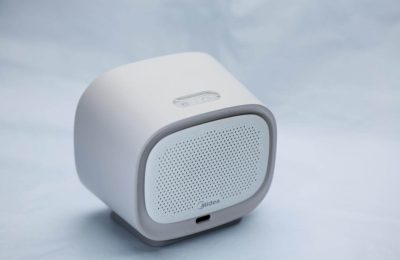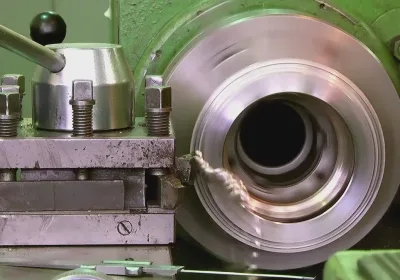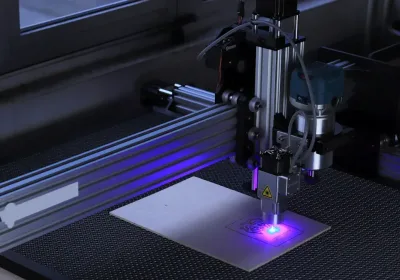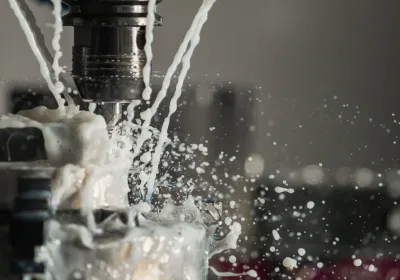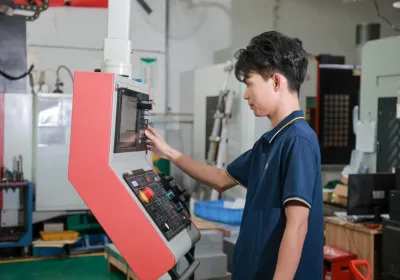
Choosing the right milling machine machine can improve how you work. It affects how accurate your products are and saves time and money. Many industries depend on advanced milling machine machines, especially car-making, which uses over 30% of these tools worldwide. As lighter materials like titanium alloys become popular, precise cutting is more important than ever. New CNC milling machine machines with smart sensors make work faster and reduce delays. Whether you need a milling machine machine for testing ideas or making many products, picking the right one helps you stay ahead in today's busy market.
Key Takeaways
Learn about milling machines like vertical, horizontal, CNC, and multi-axis. Each type works for different jobs in manufacturing.
Pick a machine based on the materials you’ll use. Make sure it’s strong and accurate enough for your projects.
Think about how much you’ll produce and if the machine can grow with your business. This helps avoid spending more later.
Look for machines with automation features. These save time, lower mistakes, and make production faster.
Check long-term costs like repairs and energy use. A good machine can save money over time.
Types of Milling Machines
Choosing the right milling machine starts with knowing the types available. Each type has special features for different manufacturing tasks. Below are three main types: vertical, horizontal, and CNC.
Vertical Milling Machines
A vertical milling machine is one of the most popular types. Its spindle points up and down, letting you drill, cut, and shape materials accurately. These machines work well for detailed designs or smaller parts.
Benefits of Vertical Milling Machines:
Easy to Use: The upright design makes setup and operation simple.
Flexible: It handles many tasks, from testing ideas to small production runs.
Vertical machines are widely used because they are adaptable. In 2023, they made up 54.61% of the CNC milling machine market. They are great for working with metals, plastics, or other materials, offering precision and control.
Horizontal Milling Machines
Horizontal milling machines have a spindle that lies sideways. This design is better for handling bigger, heavier materials. They are great for cutting deep grooves and complex shapes.
Why Pick Horizontal Milling Machines?
Fast Work: They handle large materials quickly, saving time.
Better Chip Removal: Chips fall away easily, keeping tools in good shape.
Horizontal CNC machines are becoming more popular, growing at 4.92% annually. They are ideal for heavy-duty projects and making large, complex parts.
CNC Milling Machines
CNC milling machines are the most advanced option. They use computer controls to automate tasks, ensuring high accuracy and consistency. These machines are essential for industries like aerospace, cars, and medical devices.
Feature | What It Does |
|---|---|
Delivers exact results, perfect for industries needing tight tolerances. | |
Repeatability | Repeats detailed tasks perfectly, keeping quality high. |
Cost-Effectiveness | Reduces waste and lowers costs by optimizing tool paths. |
Complex Geometries | Handles tricky shapes that are hard to make manually. |
Versatility | Works with many materials and tools for various jobs. |
Quick Prototyping | Makes accurate prototypes fast, speeding up product development. |
Scalability | Adjusts production easily to meet demand, boosting efficiency. |
When picking a CNC milling machine, work with a trusted manufacturer. They can help you find the right model for your needs. With CNC technology, you can create high-quality parts quickly, no matter how complex they are.
Multi-Axis Milling Machines
Multi-axis milling machines are the top of modern tools. They go beyond the usual three axes (X, Y, Z) by adding rotation axes like A, B, or C. This lets them make detailed parts with great accuracy and speed.
Why Choose Multi-Axis Milling Machines?
More Flexibility: These machines can create tricky shapes like curves and undercuts. They do this without needing to move the material around.
Better Accuracy: Since the material stays in one place, mistakes are fewer. This keeps the quality of all parts the same.
Saves Time: Multi-axis machines do many tasks in one setup. This makes work faster and more efficient.
Works with Many Materials: They handle metals, plastics, and composites. Whether for planes, cars, or medical tools, they fit many industries.
Uses of Multi-Axis Milling Machines
These machines are key for jobs needing high detail and precision. In aerospace, they make turbine blades and other parts. In medicine, they create implants and surgical tools. They are also great for testing new designs quickly.
Pro Tip: Think about how many axes you need before buying. A 5-axis machine works for most jobs, but 6 or 7 axes may be needed for special tasks.
Universal and Planer Milling Machines
Universal and planer milling machines are useful for specific jobs. They are not as advanced as multi-axis machines but still help in many workshops.
Universal Milling Machines
A universal milling machine mixes vertical and horizontal features. Its table can turn, letting it cut at angles. This makes it good for small to medium projects.
Benefits of Universal Milling Machines:
Versatile: Switch between vertical and horizontal cutting easily.
Affordable: Cheaper than multi-axis machines, great for small businesses.
Simple to Use: Easy to set up and operate.
Planer Milling Machines
Planer milling machines are made for heavy-duty work. They have a big table that stays still and a moving cutter. This makes them perfect for large, tough materials.
Main Features of Planer Milling Machines:
Strong Power: Cuts hard materials like steel and titanium.
Big Space: Fits very large parts.
Built to Last: Made for tough, long-term use.
Note: Universal and planer machines are best for certain tasks. If you need high precision or automation, a CNC milling machine is a better choice.
Key Capabilities and Features of Milling Machines
Precision and Accuracy
Precision means making parts exactly as needed. Accuracy ensures the parts match the design perfectly. Modern milling machines are very precise, which is important for industries like airplanes, medical tools, and electronics. New models use smart systems to improve accuracy by 9.55%. They do this by studying both steady cutting settings and changing cutting-force data.
Feature | Description |
|---|---|
Model Type | Smart learning system |
Accuracy Improvement | 9.55% better than older machine learning methods |
Data Sources | Steady cutting settings and changing cutting-force data |
Robustness | Works well even with noisy signals |
Automatic tool changers and pallet systems help reduce mistakes. These tools keep the quality of parts the same every time. If you want better accuracy, choose machines with advanced features and automation.
Speed and Efficiency
Speed means working fast, while efficiency means doing it well. High-speed milling uses spindles that spin up to 170,000 times per minute. It also adjusts how fast the material moves. The DN number, which measures speed, ranges from 1.5 million to 2 million. This shows how well the machine handles tough jobs.
Coolants, cutting speed, and the number of cutting tool inserts affect efficiency. Milling shapes materials quickly while keeping surfaces smooth. Fast machines save time and boost production, making them great for industries needing quick results.
Automation and Programmability
Automation makes machines work on their own. Programmability lets you set custom tasks. AI systems now program toolpaths in seconds instead of 16 minutes. Small improvements in automation lead to big gains in production speed.
Improvement Type | Measurement |
|---|---|
Assembly Line Speed | 15% faster |
Automated Inspection Rate | 70% automated |
Automation saves time and improves machine quality. Automated inspections check parts for errors, while programmable settings allow custom designs. Using automation helps you make precise parts and stay competitive in manufacturing.
Material Compatibility
When picking a milling machine, think about the materials it can handle. Not all machines work well with every material. Some are better for metals like steel or aluminum. Others are great for plastics or composite materials. Your choice depends on what you need to make.
Hard materials, like titanium or hardened steel, need strong tools. These tools must handle high heat and pressure. Machines with heat-resistant tools work best for these jobs. Softer materials, like plastics, need less sturdy tools. Still, the machine and tool must match well. This helps the machine work better and last longer.
Different tasks need special tools. For example, smooth finishes need precision-cutting tools. If your project needs tight measurements, use high-accuracy tools. Machines with automatic tool changers and calibration systems help a lot. They save time and keep the quality steady.
Feature | How It Helps |
|---|---|
Makes very accurate and detailed parts | |
Automatic toolpath creation | Speeds up work and boosts efficiency |
Dual material holders | Handles different materials easily |
Automated tool changer | Cuts downtime and improves workflow |
Automatic calibration | Keeps performance steady and parts high-quality |
Knowing how materials and machines work together is important. It helps you get the best results from your CNC milling projects. This way, your machine works well no matter the material.
Size and Work Envelope
The size and work area of a milling machine decide what parts it can make. The work area is the space where the spindle and tools move. You need to match this space to the size of your projects.
For small parts, compact machines are a good choice. They take up less space and are easy to use. For bigger parts, like those in cars or planes, you need a larger work area. Machines with big work areas handle large materials without losing accuracy.
Multi-axis CNC milling machines give more options. They can make complex shapes in small spaces. This is helpful for detailed designs or prototypes. Machines with adjustable tables or modular setups can fit different part sizes. This makes them useful for many jobs.
Tip: Measure the biggest part you plan to make. Make sure the machine’s work area is larger than that. This avoids problems during production and allows for future growth.
Picking the right size and work area ensures your machine fits your needs. It also saves money by avoiding upgrades or replacements later.
Applications of Milling Machines in Different Industries
Automotive Uses
Milling machines are very important in making car parts. They help create and fix engine parts, body panels, and transmissions. These machines make sure every part is strong and precise for modern cars. The need for high-quality car parts has led to more investments in milling machines. This not only improves production but also creates jobs in car factories.
For instance, CNC milling machines make lightweight parts from aluminum and magnesium. These materials save fuel while staying strong. Multi-axis machines can also make tricky shapes like cylinder heads and intake manifolds. By using advanced milling tools, car makers can meet new demands and save money.
Aerospace and Defense Uses
In aerospace and defense, parts must be exact and reliable. Milling machines make key items like turbine blades, landing gear, and plane bodies. CNC machines ensure these parts meet strict safety and performance rules. Special software tracks machine health, reducing downtime and keeping production steady.
Feature | Benefit |
|---|---|
Advanced Tools | |
Safety Standards | Follows NIST 800.171 for secure manufacturing. |
Maintenance Tracking | IoT software predicts repairs, cutting downtime and boosting uptime. |
In 2023, over 1,500 planes were built, showing the need for good milling machines. Multi-axis CNC machines are great for making detailed parts with high precision. Using these tools helps aerospace and defense companies get excellent results.
Medical Device Uses
The medical field depends on milling machines for life-saving tools. They make things like surgical tools and bone implants with great accuracy. CNC machines are especially good at making custom implants for patients. These implants fit better, helping patients heal faster.
High-speed milling machines work well with titanium and stainless steel. These materials are common in medical tools because they are safe for the body. These machines also create smooth surfaces and exact shapes, which are crucial for medical devices. By using advanced milling machines, you can meet strict medical standards while staying efficient.
Electronics and Semiconductor Applications
Electronics and semiconductor industries depend on milling machines for precise work. These machines make small parts like circuit boards, heat sinks, and connectors. These parts need exact sizes and smooth surfaces to work well. Milling machines are great at delivering these qualities, making them essential for electronics.
High-speed milling is important for making semiconductors. It helps create tiny features on silicon wafers and other materials. Multi-axis milling machines can make complex shapes needed for advanced chips. They also use special tools that work with delicate materials like silicon and gallium arsenide.
Automation improves how milling machines work in this field. Automated tool changers and programmable settings ensure consistent results. They also save time, which is crucial for making large amounts of products. Advanced milling machines help meet the demand for smaller and faster electronic devices.
Tip: Pick a milling machine with high-speed spindles and precise controls. These features are perfect for detailed and delicate tasks.
General Manufacturing and Prototyping Applications
Milling machines are key for general manufacturing and prototyping, especially for small businesses. Micromilling helps make molds for devices, cutting costs and boosting efficiency. It also lets you create tiny features directly in devices, speeding up prototypes.
Micromilling works with many materials, making it very flexible. Whether you use metals, plastics, or composites, these machines adapt easily. They offer high precision, which is vital for detailed tasks. For small businesses, this flexibility leads to better productivity and results.
Aspect | Description |
|---|---|
Adaptability | Handles different materials and complex shapes effectively. |
Precision | Creates fine details and exact sizes for manufacturing. |
Productivity | Boosts output, helping small businesses succeed. |
Rapid prototyping is another big benefit of milling machines. You can turn ideas into prototypes quickly, saving time. This helps businesses innovate faster and avoid long development times. Using milling machines keeps small businesses competitive and ready for market changes.
Note: Choose a milling machine with automated toolpath creation and calibration systems. These features save time and ensure steady quality.
How to Choose a CNC Milling Machine
Material Type and Properties
Picking the right CNC milling machine depends on the material you’ll use. Different materials act differently when cut, shaped, or finished. You need to check these traits to make sure the machine fits your needs.
Here are some important things to think about:
Key Factor | What It Means |
|---|---|
Handles stress well, making parts last longer. | |
Corrosion resistance | Stays strong in tough conditions; good for steel and aluminum. |
Thermal properties | Works well in heat; great for titanium and carbon steel. |
For tough metals like titanium, you need strong tools and heat-proof features. Softer materials, like plastics, need less force but more care to avoid damage. Machines with automatic tool changers and calibration systems adjust easily, making work faster and more accurate.
Tip: Match the machine’s abilities to the material’s traits. This keeps tools safe and ensures good results.
Production Volume and Scalability
How much you plan to make matters when picking a CNC milling machine. High-volume machines have fast spindles, auto tool changers, and big work areas. These features help you finish jobs quickly and keep quality steady.
For smaller jobs, compact machines are better. They cost less and are easy to use, perfect for testing ideas or custom work. If you expect to grow, choose a machine that can scale up. Modular designs or upgradeable parts let you add features later without buying a new machine.
Pro Tip: Think about your future needs. A scalable machine now saves money and effort later.
Required Precision and Tolerances
Precision is key for industries like aerospace, medical tools, and electronics. Your CNC milling machine must meet exact project needs to make reliable products. Machines with multi-axis features and fast spindles offer high precision, even for tricky shapes.
For example, a 5-axis machine makes detailed parts with tight tolerances. Auto calibration keeps tools aligned for better accuracy. If your work needs tiny details, pick a machine with micromilling features. These machines handle very small tolerances, down to a few microns.
Note: Check the machine’s precision rating to match your project needs. High-precision machines cost more but save money by reducing mistakes and waste.
Operator Skill Level and Training
Your skills and training are important for using a milling machine well. A trained operator works faster, makes fewer mistakes, and keeps quality steady. Without training, even advanced machines won't work as they should.
Studies show that skilled operators improve productivity. For example, machinists with good planning skills make operations faster and smoother. Systems that use operator knowledge for cutting plans also give better results. Below is a summary of study findings:
Study | Findings |
|---|---|
Se Kim et al. | Created a method for planning operations using machinist skills. |
Chen et al. | Built an AI system for cutting plans that uses machinist knowledge. |
Takizawa et al. | |
Additional Findings | Traditional machining skills improve CNC efficiency, showing the need for training. |
Training should include both technical lessons and hands-on practice. Learning to set up machines, pick tools, and adjust settings boosts efficiency. Advanced training in CNC programming helps handle harder tasks.
Tip: Update your skills often to keep up with new milling machine technology. Many manufacturers offer training programs for their machines.
Space and Facility Constraints
The space in your workshop decides what size milling machine you can use. Before buying, check your workspace carefully. Small spaces can make it hard to use machines properly. Bigger areas allow better workflow and safety.
Compact machines fit small workshops and are easy to move. But they may not work for big projects. Larger machines need more room and good ventilation to work well.
Think about these factors when planning your space:
Machine Size: Measure the machine to ensure it fits your workspace.
Electricity Needs: Check if your power system can handle the machine.
Cooling and Airflow: Machines get hot. Good ventilation keeps them safe and cool.
Access: Leave space around the machine for repairs, tool changes, and moving materials.
Pro Tip: Make a layout plan before setting up your milling machine. This helps you use space wisely and avoid problems later.
Planning your space ensures your milling machine works safely and efficiently. Good preparation prevents costly mistakes and downtime in the future.
Cost Considerations and Long-Term Value
Initial Investment vs. Operational Costs
When picking a CNC milling machine, think about the upfront cost and long-term expenses. Cheaper machines may cost less at first but might need more units to handle different tasks. This can increase costs over time. High-quality machines cost more initially but are more reliable and need less maintenance, saving money in the long run.
For example, Mill-Turn machines cost more upfront but save time and labor. They improve efficiency, which balances out the higher price. Always compare the purchase price with future costs to ensure the machine fits your goals.
Tip: Spending more on a better machine now can save money later by reducing repairs and keeping performance steady.
Maintenance and Downtime
Taking care of your CNC milling machine is important for it to work well. Tools like the Fused Data Prediction Model (FDPM) can predict blade wear with over 93% accuracy. This helps you fix issues before they cause breakdowns, saving time and money.
Modern apps with machine learning also track machine health. They warn you about problems early, so you can fix them before they get worse. This reduces downtime and makes your machine last longer. Regular maintenance saves money and keeps your machine running smoothly.
Note: Using tools that predict maintenance needs can cut production delays and improve efficiency.
Energy Efficiency and Sustainability
Energy-saving CNC milling machines are important for cutting costs and helping the environment. Machines with smart cooling systems and lower power use save energy and reduce bills. Using recyclable materials and creating less waste also helps save money over time.
Some CNC machines have energy-saving modes that adjust power use based on the job. These features lower costs and support eco-friendly goals. Choosing energy-efficient machines helps you stay competitive and reduce your carbon footprint.
Pro Tip: Pick machines with eco-friendly features or energy certifications to save money and protect the environment.
Resale Value and Upgradability
When picking a milling machine, think about its resale value and upgrades. These things affect how useful your investment will be over time. A machine with good resale value lets you get back some money when selling it. This is helpful if your needs change later.
Machines that are strong and work well keep their value longer. Buyers like models that need little fixing and have a good history. If you plan to sell your machine, take care of it. Regular maintenance and careful use make it more appealing to buyers.
Upgrades are also important. Many modern machines let you add new parts or improve features. For example, you can make the spindle faster or add tools for automation. These upgrades help your machine last longer and stay useful as technology changes.
Check if the maker of the machine supports upgrades. Some companies offer updates or kits to make improvements easier. Machines with flexible designs can handle new tech, so you don’t need to buy a whole new one.
Tip: Pick a machine with good resale value and upgrade options. This keeps your investment useful and ready for future needs.
By thinking about resale value and upgrades, you get more from your machine. These factors help you save money and stay competitive in manufacturing.
Picking the right milling machine is key to doing great work. Matching the machine to your needs ensures accurate and fast results. Think about long-term benefits like how strong and adaptable it is. Check what you need carefully before deciding. Talk to professionals to choose the best CNC machine for your tasks. This way, you save time and get more done.
FAQ
What should you think about when picking a milling machine?
Focus on what your work needs. Look at the materials you’ll use, how precise the machine must be, and how much you need to make. These points help you choose a machine that works well for your tasks.
How do CNC milling machines make work faster?
CNC milling machines do tasks automatically, cutting down mistakes and speeding up work. They can handle tricky designs with great accuracy, making them perfect for industries needing exact and large-scale production.
Can one milling machine work with different materials?
Yes, many modern machines can handle metals, plastics, and more. Machines with adjustable settings and automatic tool changers make switching between materials simple and quick.
Why are multi-axis milling machines useful?
Multi-axis machines can make detailed shapes without moving the material. This saves time and keeps the work accurate. They are great for industries like aerospace and medical tools, where precision is very important.
What care does a milling machine need?
You should clean it, oil it, and check for worn-out parts. Tools like IoT software can spot problems early, helping you fix them before they cause delays and keeping the machine running smoothly.
 LKprototype
LKprototype

